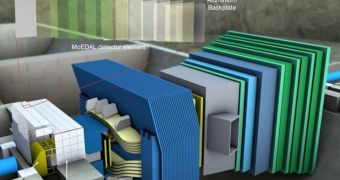Physicists operating the largest particle accelerator in the world, the Large Hadron Collider (LHC), are very hopeful that their collisions of proton beams will result in many wonderful discoveries. In addition to gaining more insight into the Big Bang, the moment when the Universe exploded into beings, and more knowledge on elementary particles and the nature of dark matter, the team is also planning to obtain a new type of hypothesized magnetic particle, called a magnetic monopole. This would essentially be a magnet that will only feature only one pole, as opposed to the average two.
Theoretically speaking, obtaining the new particle is not impossible, physicists say. The LHC is sufficiently energetic to collide particles at the energy levels required to make this a reality. Still, it remains to be seen whether the actual construct will be obtained. Only two days ago, experts from the European Organization for Nuclear Research (CERN), which manages the accelerator, began smashing together the first proton beams moving at energy levels of 7 teraelectronvolts (TeV) total. Each stream of protons currently moves through the tunnels under Geneva at 3.5 TeV energy levels.
The 17-mile (24-kilometer) long LHC is the only place in the world where sufficiently-powerful particle collisions can take place, to promote the formation and to allow for the identification of the hypothesized magnetic monopole. The reason why such large machines are needed to test the existence of heavy particles is the very reason why Albert Einstein is famous around the world – the theory that mass and energy are equivalent. Higher energy levels therefore correspond with heavier particles.
“The trouble is, we don’t know the mass of the monopole. We know it's got to be heavy because we would have [otherwise] seen it before. It could even be so heavy that we can't make it at LHC,” says University of Alberta in Canada physicist James Pinfold, who is in charge of the quest for the magnetic monopole at the LHC. The expert and his team plan to use the nearly-complete MoEDAL Experiment to look for the monopole. The instrument will be set up around one of the points were particle beams cross and collide. The group is hopeful that the accelerator can produce sufficient energy to allow for the formation and identification of the monopole, LiveScience reports.

 14 DAY TRIAL //
14 DAY TRIAL //